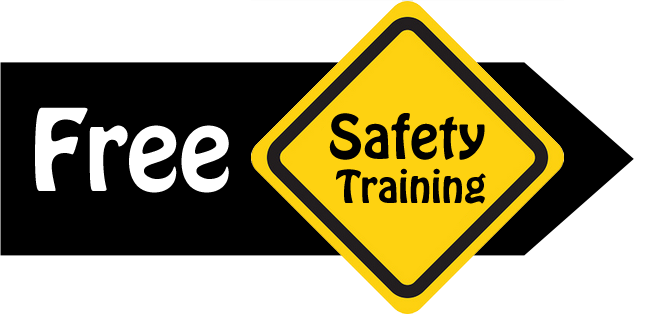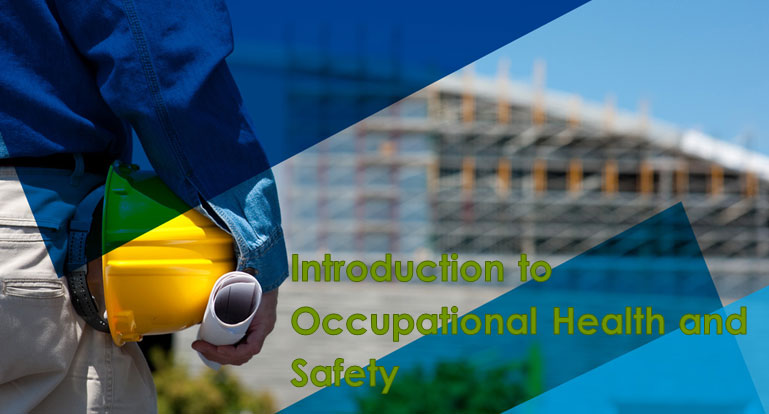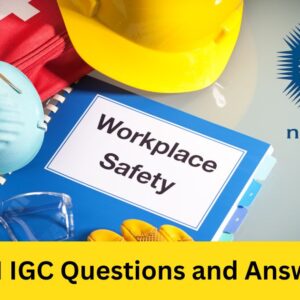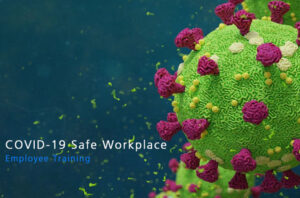Description
Enhance your knowledge and advance your career in occupational health and safety with our comprehensive guide. This invaluable resource is highly recommended for HSE professionals aiming to cultivate a robust health and safety culture in their workplaces.
Key Features:
- Content: The PDF comprises a total of 13 elements divided into two parts, covering a wide range of topics essential for occupational health and safety.
- Part I: Consists of 5 elements, including foundational aspects of health and safety, health and safety management systems, risk assessment, emergency procedures, and more.
- Part II: Encompasses 8 elements addressing workplace hazards and risk control, transport hazards, musculoskeletal hazards, work equipment hazards, electrical safety, fire safety, chemical and biological health hazards, and physical and psychological health hazards.
Table of Contents
Part I
- Foundations in Health and Safety
- Health and Safety Management System – Plan
- Health and Safety Management System – Do
- Health and Safety Management System – Check
- Health and Safety Management System – Act
Part II
- Workplace Hazards and Risk Control
- Transport Hazards and Risk Control
- Musculoskeletal Hazards and Risk Control
- Work Equipment Hazards and Risk Control
- Electrical Safety
- Fire Safety
- Chemical and Biological Health Hazards and Risk Control
- Physical and Psychological Health Hazards and Risk Control
With detailed insights into each element and comprehensive coverage of essential topics, our Occupational Health and Safety Books PDF serves as an ideal resource for individuals preparing for NEBOSH International General Certificate and NEBOSH National General Certificate exams.
Total Number of Pages in the PDF:
- Introduction to Occupational Health and Safety Part I: 316 pages
- Introduction to Occupational Health and Safety Part II: 430 pages
Detailed Table of Content
Part I
ELEMENT1 – Foundations in health and safety 7
1.1 The scope and nature of occupational health and safety 8
1.1.1 The multi-disciplinary nature of health and safety; the barriers to good standards of health and safety 9
1.1.2 Some Meanings and distinctions 12
1.2 Moral, social and economic reasons for maintaining and promoting good standards of health and safety in the workplace 13
1.2.1 Moral reasons 13
1.2.2 Social reasons 17
1.2.3 Economic reasons 18
1.2.4 The need to provide a safe place of work, safe plant and equipment, safe system of work, training & supervision and competent workers. 21
1.3 The role of national governments and international bodies in formulating a framework for the regulation of health and safety 28
1.3.1 Employers’ duties and responsibilities 28
1.3.2 Workers’ rights and responsibilities 28
1.3.3 Role of enforcement agencies 31
1.3.4 International standards and conventions 32
1.3.5 The nature and sources of information on health and safety 35
ELEMENT 2 – Health and safety management system – Plan 37
2.1 Outline the key elements of health & safety management system 38
2.1.1 With reference to ILO Guidelines on Occupational Safety and Health Management Systems (ILO-OSH 2001) 41
2.1.2 With reference to ISO 45001:2018: Occupational health and safety management systems (H&SMS) context of the organisation (H&SMS framework) 59
2.2 The purpose and importance of setting policy for health and safety 63
2.3 The key features and appropriate content of an effective health and safety policy 64
2.3.1 Stating the overall aims of the organisation in terms of health and safety performance 64
Benchmarking is a quality improvement tool that identifies: 71
2.3.2 Defining the health and safety roles and responsibilities of individuals within the organisation 77
2.3.3 Specifying the arrangements for achieving general and specific aims 82
2.3.4 The circumstances that may lead to a need to review the health and safety policy 89
2.3.5 Standards and guidance relating to health and safety policy. 90
Element 3 – Health and safety management systems – Do 94
3.1 Organisational health and safety roles and responsibilities of employers, directors, managers, supervisors, workers and other relevant parties 97
3.1.1 Employers responsibilities 97
3.1.2 Role of the CEO/HSE Management Team 102
3.1.3 Top management Role in reviewing health and safety performance 109
3.1.4 Roles & responsibilities of workers of themselves & others who may be affected by their acts or omissions. 110
3.1.5 Shared responsibilities in the case of joint occupation of premises: co-operation & co-ordination 112
3.2 Organisational health and safety responsibilities – directors 113
3.2.1 Plan and direction of health and safety 114
3.2.2 Deliver health and safety 115
3.2.3 Monitor health and safety 116
3.2.4 Review health and safety 117
3.3 Managing directors/Chief executives 118
3.4 Departmental managers 118
3.5 Supervisors responsibilities 119
3.6 Workers responsibilities 119
3.7 Role and functions of health and safety practitioners and other advisers 120
3.7.1 Appointing one or more competent persons and adequate resources to provide assistance in meeting the organisation’s health and safety obligations (including specialist help where necessary) 120
3.7.2 Health and safety practitioner 121
3.8 Persons in control of premises 123
3.9 Self employed 124
3.10 The supply chain 124
3.10.1 Introduction 124
3.10.2 Advantages of good supply chain management 125
3.10.3 Legislation and standards 127
3.10.4 Information for customers 128
3.10.5 Information for customers 129
3.11 The relationship between client and contractor 130
3.11.1 Introduction 130
3.11.2 Legal consideration 130
3.11.3 Construction projects 132
3.11.4 Contractor section 133
3.11.5 Contractor authorisation 134
3.11.6 Safety rules for contractor 135
3.11.8 Example of rules for contractor 136
3.11.8 Principles of assessing and managing contractors 138
3.12 Shared responsibilities in the case of joint occupation of premises 141
3.13 Consultation with workforce 143
3.13.1 General 143
3.13.2 Safety committees 143
3.13.3 Accident and ill-health investigations 144
3.14 Concept of health and safety culture and its significance in the management of health and safety in an organization 144
3.14.1 Relationship between health and safety culture and health and safety performance 145
3.14.2 Indicators which could be used to assess the effectiveness of an organisation’s health and safety culture 145
3.14.3 Meaning and extent of the term ‘health and safety culture’ 147
3.14.4 Influence of peers 150
3.15 Human factors which influence behaviour at work 157
3.15.1 Human factors 157
3.15.2 The organization 158
3.15.3 The job 160
3.15.4 Individual factors 162
3.16 How health and safety behaviour at work can be improved 166
3.16.1 Securing Commitment of management 166
3.16.2 Promoting health and safety standards by leadership and example and appropriate use of disciplinary procedures 167
3.16.3 Identifying and keeping up to date with legal requirements 171
3.16.4 Effective communication 175
3.16.5 Health and safety training 177
3.17 Principles and practice of risk assessment 182
3.17.1 Meaning of hazard, risk and risk assessment 182
3.17.2 Forms of risk assessment 187
3.17.3 The objective of risk assessment 188
3.17.4 The management of risk assessment 189
3.17.5 The risk assessment process 193
3.17.6 General principals of prevention 199
3.17.8 Factors that should be considered when developing and implementing a safe system of work for general work activities 214
3.17.9 Role and function of a permit-to-work system 233
3.18 Emergency procedures and the arrangements for contacting emergency services 240
3.18.1 Why an emergency procedure is required? 242
3.18.2 Size and nature of potential accidents and the consequences if they occur 242
3.18.3 Action of the employees on site 244
3.18.4 Contacting emergency services 245
3.19 Requirements for, and effective provision of, first-aid in the workplace 247
3.19.1 First-aid provision check list 247
3.19.2 Contents of first-aid box 248
3.19.3 Appointed persons 249
3.20 Preventive and protective measures 251
Element 4 – Health and safety management system – Check 255
4.1 Active and reactive monitoring 256
4.1.1 Active monitoring 256
4.1.2 Reactive monitoring 267
4.2 Investigating incidents 269
4.2.1 Reasons for accident/incident investigation 270
4.2.2 Which incidents/accidents should be investigated? 272
4.2.3 Investigation and cause of accidents/incidents 274
4.3 Recording and reporting incidents 280
4.3.1 Incident records 280
4.3.2 Typical Incidents which need to be reported 281
4.3.3 Compensation and insurance issues 283
4.3.4 Lesson learnt 285
Element 5 – Health and safety management system – Act 286
5.1 Health and safety auditing 287
5.1.1 Audits – purpose 287
5.1.2 Advantages and disadvantages of external and internal audits 289
5.1.3 ILO-OSH 2001 requirements of audits 291
5.1.4 Gathering information 293
5.1.5 Making judgements 294
5.2 Review of health and safety performance 295
5.2.1 Purpose of reviewing health and safety performance: 296
5.2.2 Who should take part in review? 297
5.2.3 Review at planned intervals 299
5.2.4 Assessing opportunities for improvement and the need for change 300
5.2.5 Review to consider: 301
5.2.6 Maintenance of records of management review 314
5.2.7 Reporting on health and safety performance 314
5.2.8 Feeding into action and development plans as part of continuous improvement 315
Part II
Element 1 – Workplace hazards and risk control 8
1.1 Health, welfare and work environment requirements 9
1.1.1 Health and welfare provisions 9
1.1.2 The effects of exposure to extremes of temperature; preventive measures 13
1.1.3 Prevention of falling materials through safe stacking and storage 19
1.2 Violence at work 26
1.2.1 Risk factors relating to violence at work 28
1.2.2 Appropriate control measures to reduce risks from violence at work 30
1.3 Substance misuse at work 34
1.3.1 Types of substances misused at work 34
1.3.2 Risks to health and safety from substance misuse at work 36
1.3.3 Control measures to reduce risks from substance misuse at work 38
1.4 Safe movement of people in the workplace 41
1.4.1 Hazards in the workplace 41
1.4.2 Control measures for the safe movement of people in the workplace 44
1.5 Working at height 49
1.5.1 Examples of work activities involving a risk of injury from falling from height, and the significance of such injuries 49
1.5.2 Basic hazards and factors affecting risk from working at height 50
1.5.3 Methods of avoiding working at height 55
1.5.4 Main precautions necessary to prevent falls and falling materials 56
1.5.5 Emergency rescue 58
1.5.6 Provision of equipment, training, instruction and other measures to minimise distance and consequences of a fall 61
1.5.7 Head protection 64
1.5.8 Safe working practices for common forms of access equipment 65
1.5.9 Inspection of access equipment 72
1.6 Hazards and control measures for temporary works 73
1.6.1 The impact on workplaces from hazards associated with works of a temporary nature 75
1.6.2 Main control measures relating to the management of works of a temporary nature 75
Element 2 – Transport hazards and risk control 78
2.1 Safe movement of vehicles in the workplace 80
2.1.1 Hazards and factors affecting level of risk from workplace 82
2.1.2 Control measures for safe workplace transport operations 93
2.2 Driving at work 112
2.2.1 Managing work-related road safety 113
2.2.2 Risk assessment 121
2.2.3 Evaluating the risks 125
2.2.4 Control measures to reduce work-related driving risks 130
Element 3 – Musculoskeletal hazards and risk control 135
3.1 Work-related upper limb disorders 136
3.1.1 Meaning of musculoskeletal disease and work related upper limb disorders 137
3.1.2 Examples of repetitive operations 140
3.1.3 Matching the workplace to individual needs of workers 142
3.1.4 The ill-health effects of poorly designed tasks and workstations 144
3.1.5 The factors giving rise to ill-health conditions 146
3.1.6 Appropriate control measures 148
3.2 Manual handling hazards and control measures 149
3.2.1 Common types of manual handling injury 152
3.2.2 Assessment of manual handling risks 153
3.2.3 Means of avoiding or minimising the risks from manual handling 155
3.2.4 Efficient movement principles for manually lifting loads to reduce risk of musculoskeletal disorders 156
3.3 Manually operated load handling equipment 157
3.4 Powered load handling equipment 160
Element 4 – Work equipment hazards and risk control 171
4.1 General requirements for work equipment 172
4.1.1 Types of work equipment 172
4.1.2 Suitability as it relates to provision of equipment 175
4.1.3 Prevention of access to dangerous parts of machinery 177
4.1.4 The need to restrict the use and maintenance of equipment with specific risks 178
4.1.5 Extent of information, instruction and training to be provided in relation to specific risks and persons at risk 179
4.1.6 The need for equipment to be maintained and for maintenance to be conducted safely 183
4.1.7 Importance of operation and emergency controls, stability, lighting, markings and warnings, clear unobstructed workspace 185
4.1.8 Responsibilities of users 191
4.2 Hazards and control of hand-held tools 192
4.2.1 Hazards and misuse of hand held tools whether powered or not; requirements for safe use, condition and fitness for use, suitable for purpose and location to be used in (e.g. flammable atmosphere) 192
4.2.2 Hazards of portable power tools 193
4.3 Mechanical and non-mechanical hazards of machinery 199
4.3.1 Main mechanical and other hazards as identified in BS EN ISO 12100 -1 and how harm may arise 199
4.3.2 Hazards presented by a range of equipment including office machinery 201
4.4 Control measures for reducing risks from machinery hazards 205
Element 5 – Electrical safety 217
5.1 Principles, hazards and risks associated with the use of electricity at work 219
5.1.1 Basic circuitry for current to flow: relationship between voltage, current and resistance 219
5.1.2 Hazards, risks and danger of electricity 228
5.2 Control measures when working with electrical systems or using electrical equipment in all workplace conditions 241
5.2.1 Control measures 243
Element 6 – Fire safety 265
6.1 Fire initiation, classification and spread – Principals of fire 267
6.1.1 Principals of fire 267
6.1.2 Classification of fire 269
6.1.3 Principles of heat transmission and fire spread 270
6.1.4 Common causes of fire and consequences 273
6.2 Fire risk assessment 277
6.2.1 The reasons for carrying out a fire risk assessment 277
6.2.2 Factors to be considered in carrying out the assessment 278
6.3.3 Consideration of temporary workplaces and changes to workplaces 283
6.3 Fire prevention and prevention of fire spread 286
6.3.1 Control measures to minimise the risk of fire in a workplace 286
6.3.2 Storage of flammable liquids in work rooms and other locations 291
6.3.3 Awareness of structural measures to prevent the spread of fire and smoke: properties of common building materials; protection of openings and voids 294
6.3.4 Use of suitable electrical equipment in flammable atmospheres 298
6.4 Fire alarm system and fire-fighting arrangements 299
6.4.1 Fire detection, fire warning and fire-fighting equipment 299
6.5 Evacuation of a workplace 309
6.5.1 Means of escape: travel distances, stairs, passageways, doors, emergency lighting, exit and directional signs, assembly points 309
6.5.2 Emergency evacuation procedures 312
6.5.3 Role and appointment of fire marshals 313
6.5.4 Fire drills; roll call; provisions for people with disabilities 314
6.5.5 Building plans to include record of emergency escape 317
Element 7 – Chemical and biological health hazards and risk control 320
7.1 Forms of, classification of, and health risks from hazardous substances 322
7.1.1 Forms of chemical agent: 322
7.1.2 Forms of biological agent 323
7.1.3 Main classification of substances hazardous to health 324
7.1.4 Difference between acute and chronic health effects 328
7.2 Assessment of health risks 330
7.2.1 Routes of entry of hazardous substances into the body and body reaction in the form of superficial and cellular defense mechanisms with particular reference to the hazardous substances 330
7.2.2 Factors to be taken into account when assessing health risks 337
7.2.3 Source of information 339
7.2.4 Role and limitations of hazardous substance monitoring 342
7.3 Occupational exposure limits 343
7.3.1 Purpose of occupational exposure limits 344
7.3.2 Long term and short term limits 348
7.3.3 Significance of time weighted averages 349
7.3.4 Limitations of exposure limits 349
7.3.5 Application of relevant limits 350
7.3.6 Comparison of measurements to exposure limits established by competent national authorities or internationally recognised standards. 351
7.4 Control measures 352
7.4.2 The principles of good practice for the control of exposure to substances hazardous to health 352
7.5 Specific agents 371
7.5.1 Health risks and controls associated with asbestos 371
7.5.2 Managing asbestos in buildings 374
7.5.3 Health risks and controls associated with other specific agents: blood borne viruses, carbon monoxide, cement, legionella, leptospira, silica, wood dust; workplace circumstances in which they might be present. 382
7.6 Safe handling and storage of waste 388
7.6.1 Basic environmental issues relating to safe handling and storage of waste 388
Element 8 – Physical and psychological health hazards and risk control 394
8.1 Noise 395
8.1.1 The physical and psychological effects on hearing of exposure to noise 396
8.1.2 The meaning of terms commonly used in the measurement of sound 398
8.1.3 The need for assessment of exposure 399
8.1.4 Basic Noise Control Measures 401
8.1.5 Role of health surveillance 406
8.1.6 Occupations with potential noise exposure problems 409
8.2 Vibration 410
8.2.1 The effects on the body of exposure to vibration 411
8.2.2 The need for assessment of exposure 412
8.2.3 Basic vibration control measures 415
8.2.4 Role of health surveillance 416
8.3 Radiation 417
8.3.1 The types of, and differences between, non-ionising and ionising radiation (including radon) and their health effects 417
8.3.2 Typical occupational sources of non-ionising and ionising radiation 419
8.3.3 The basic means of controlling exposures to non-ionising and ionising radiation 420
8.3.4 Radiation Protection Strategy 424
8.3.5 Role of radiation monitoring and Health surveillance 425
8.4 Stress 427
8.4.1 Meaning of ‘work related stress’ 427
8.4.2 Causes, effects and control measures 429







Reviews
There are no reviews yet.